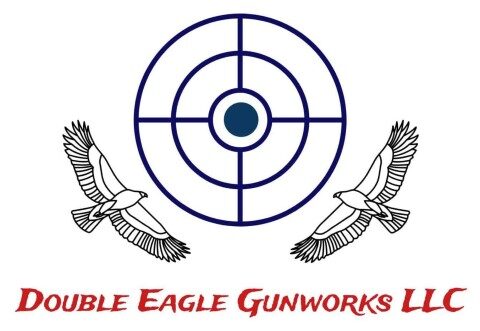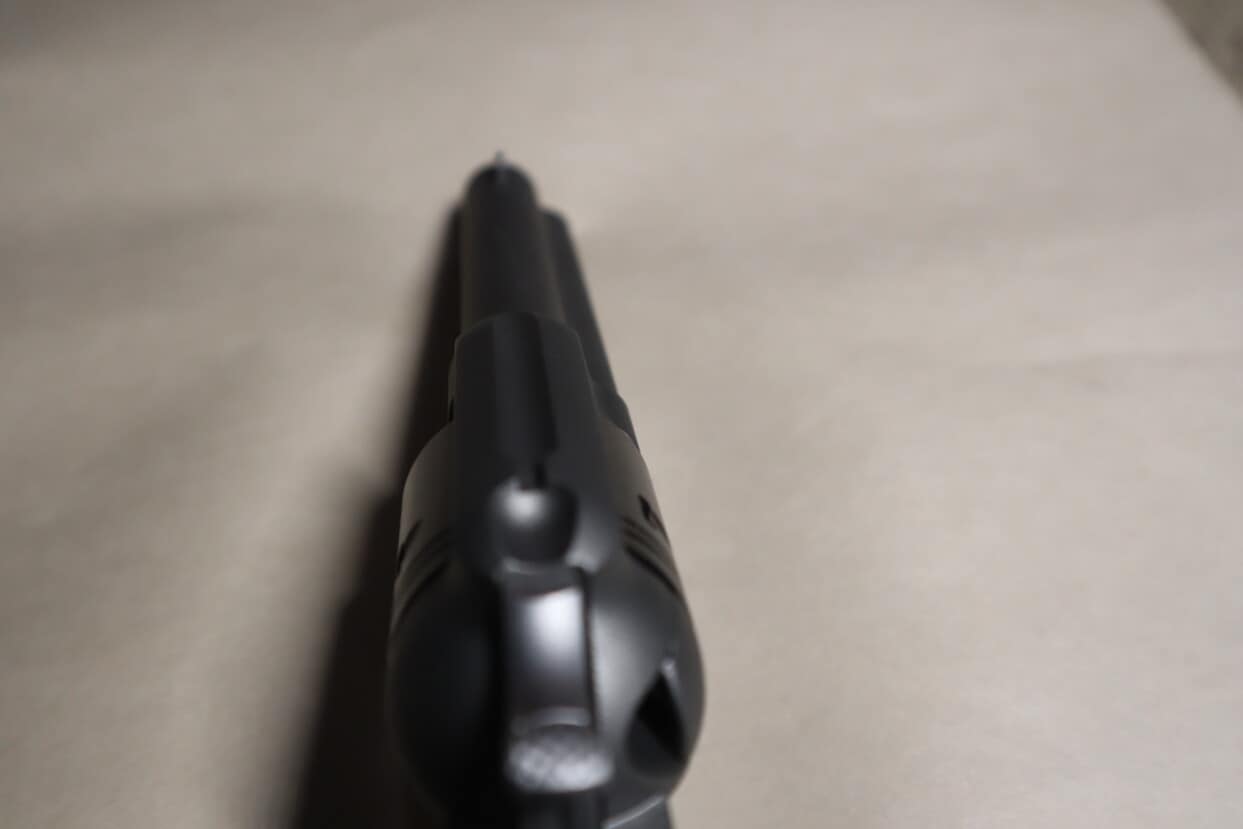When evaluating your next handgun purchase, you know you need to look at the caliber, the quality of the trigger, and the size of the barrel. What else should you look at? The sights! If you can’t focus on your target, the other details will fade into the background.
The sights that come standard on a handgun come in an infinite variety, but let’s look at five common iterations:
- Simple Groove and Post
- Fiber optic
- Fully Adjustable Rear Sight with Orange Insert in Front Post
- Three Dot Sight
- Tritium Night sights
To illustrate the differences, I gathered a gun with each type of sights. Let me introduce them to you.
Ruger Wrangler: Basic Groove With a Fixed Front Post
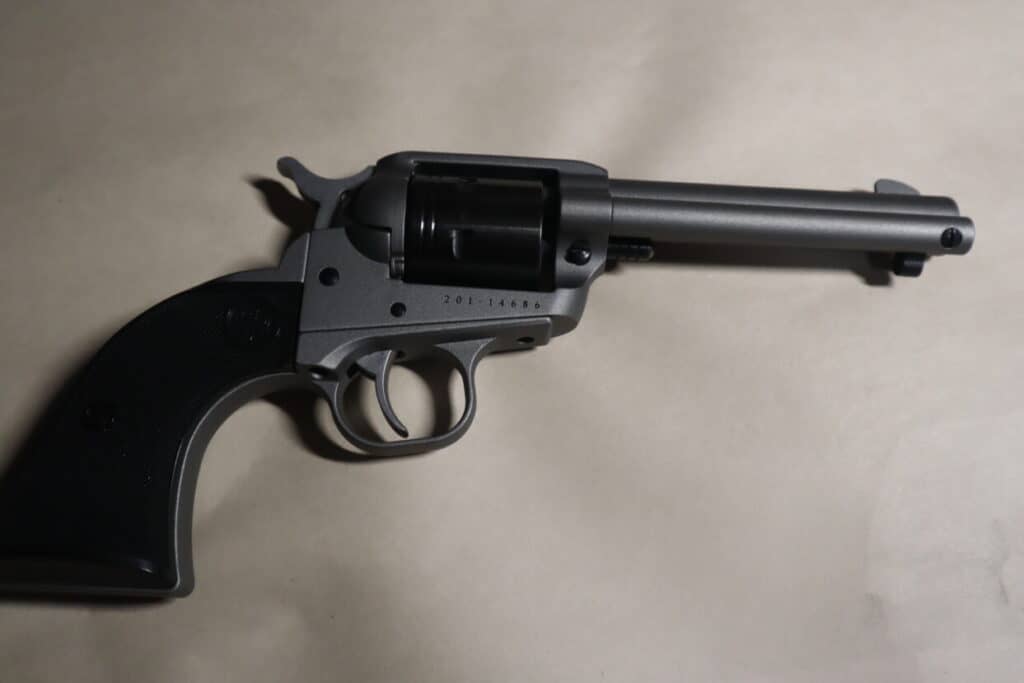

With the very simplest of sights, you align a single groove at the back where your eye meets the gun with the front post. Just look down the middle of the groove and focus on where the projectile will hit the target.
This simple style is supplied with older and more basic revolvers. Its no-fuss style will appeal to the straightforward shooter who just wants a place to aim. There is no adjustability or interchangeability with this basic type of sight. You get what you get.
Taurus Model 85: Fiberoptic tube
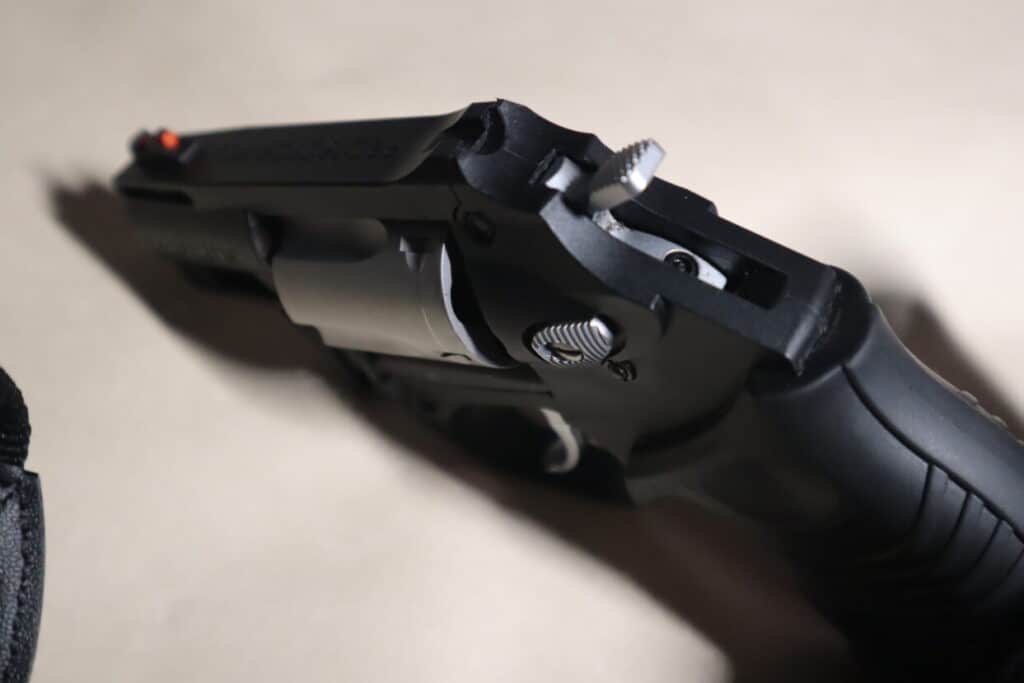
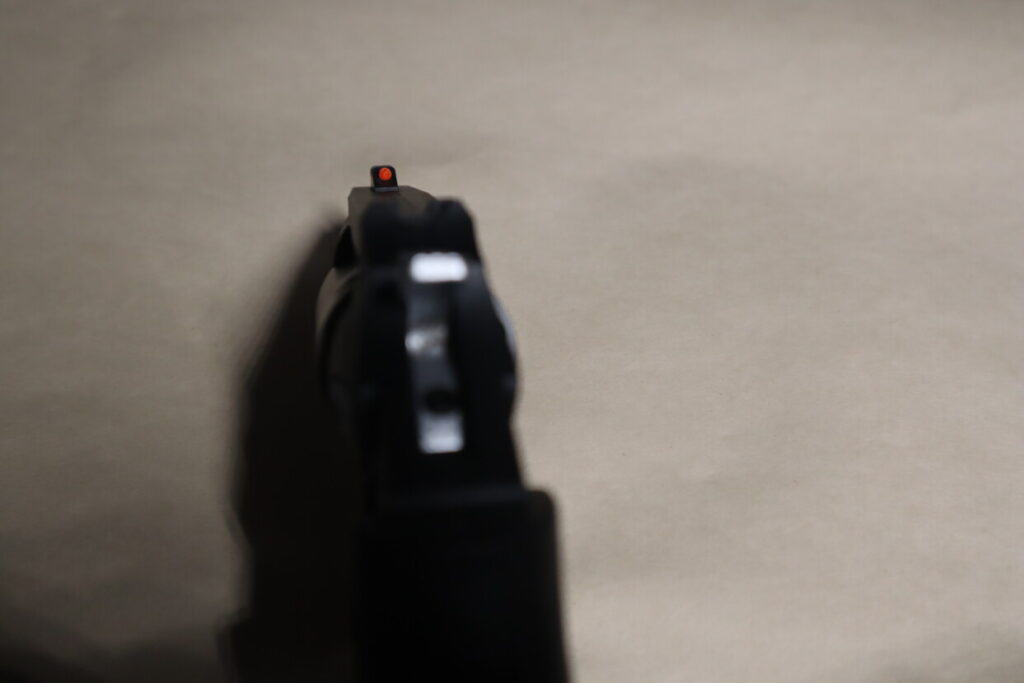
This small revolver is designed for concealed carry and focuses on being compact. The bright orange tube at the front is a fiberoptic vial that magnifies the light available to give you a strong focal point.
You look at the U-shaped groove between the two posts at the back and line up the orange tube with your target.
I like the way fiberoptic sights blatantly call your attention to the focal point rather than making you hunt for your point of reference. This type is good for someone who needs to find the target quickly.
The bright orange vial will hold more light in a low light situation because of its ability to concentrate whatever light you have.
Smith and Wesson 686 Plus: Fully Adjustable Rear Sight and Front Post With Orange Insert
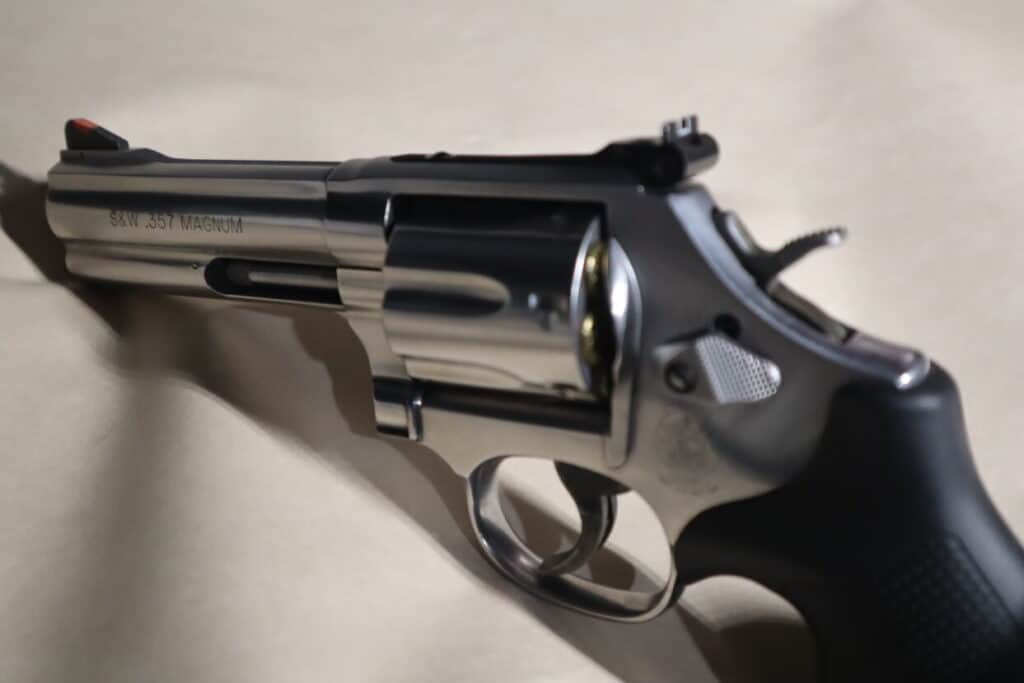
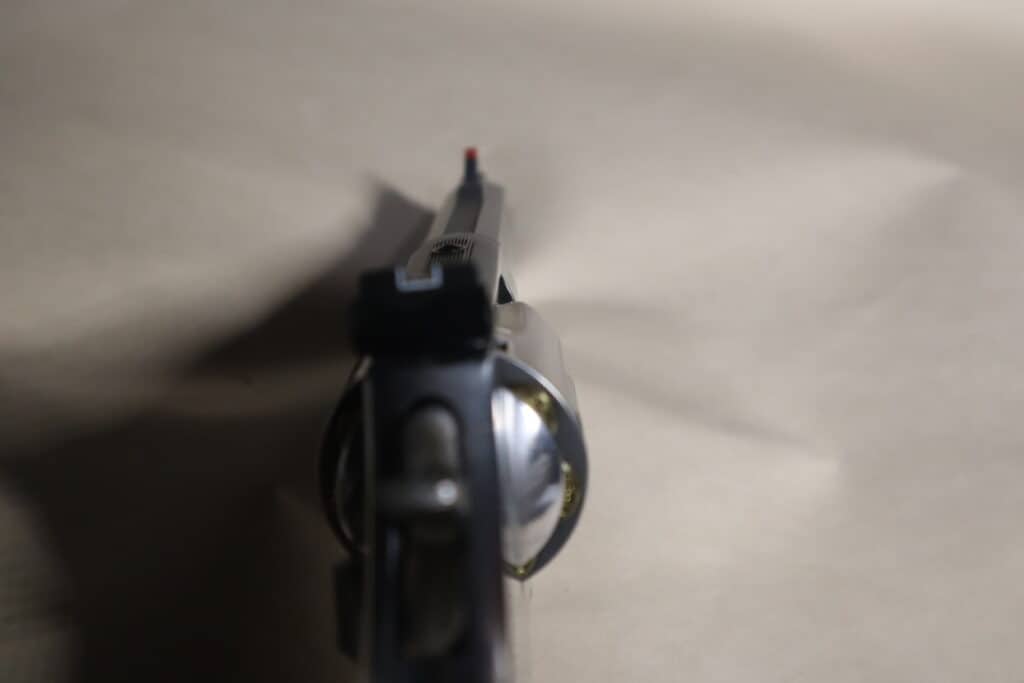
The U-shaped groove at the back of the gun is outlined in white to help you pick it out in a hurry. You can adjust the height of the sight for elevation and the right to left orientation for windage to correct any tendency to shoot too far up, down, left, or right of the target.
The front sight has an orange insert to capture your eye as you use it to acquire your target. This sight is good for a shooter who wants adjustability for more accurate shooting.
Ruger SR22: Fully Adjustable Three Dot Sight
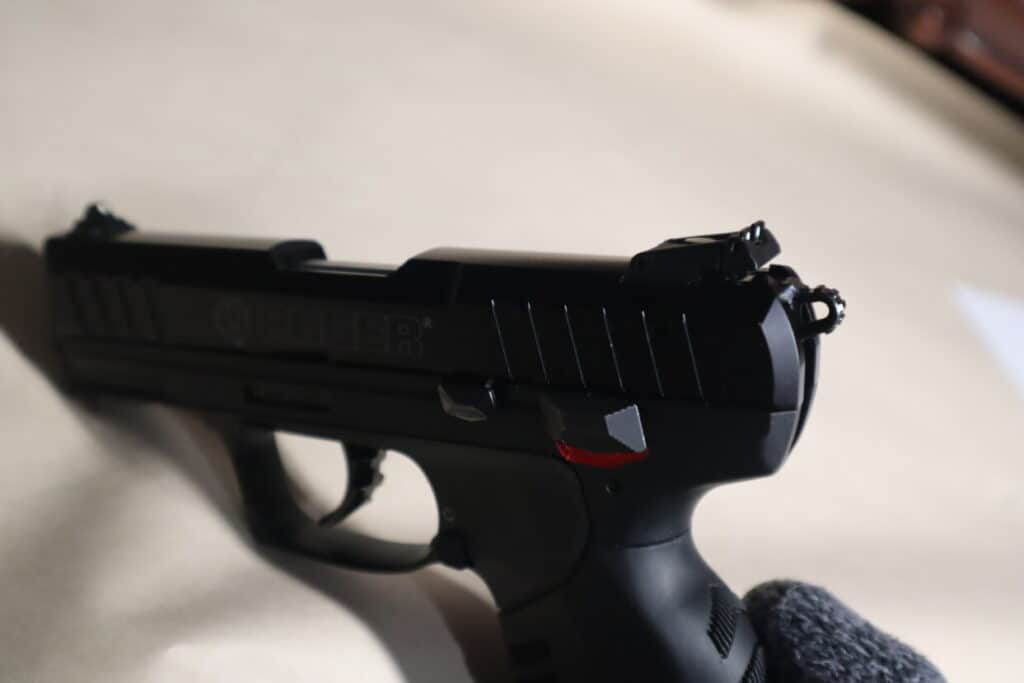

This gun has a U-shaped groove between two posts at the back, and each post is marked with a white dot. The front sight has another dot and the goal is to line up all three dots left to right while your eye is on the target.
The rear sight is fully adjustable to allow for windage and elevation. This sight is great for a shooter who likes the confirmation of connecting the dots.
HK45: Night Sights
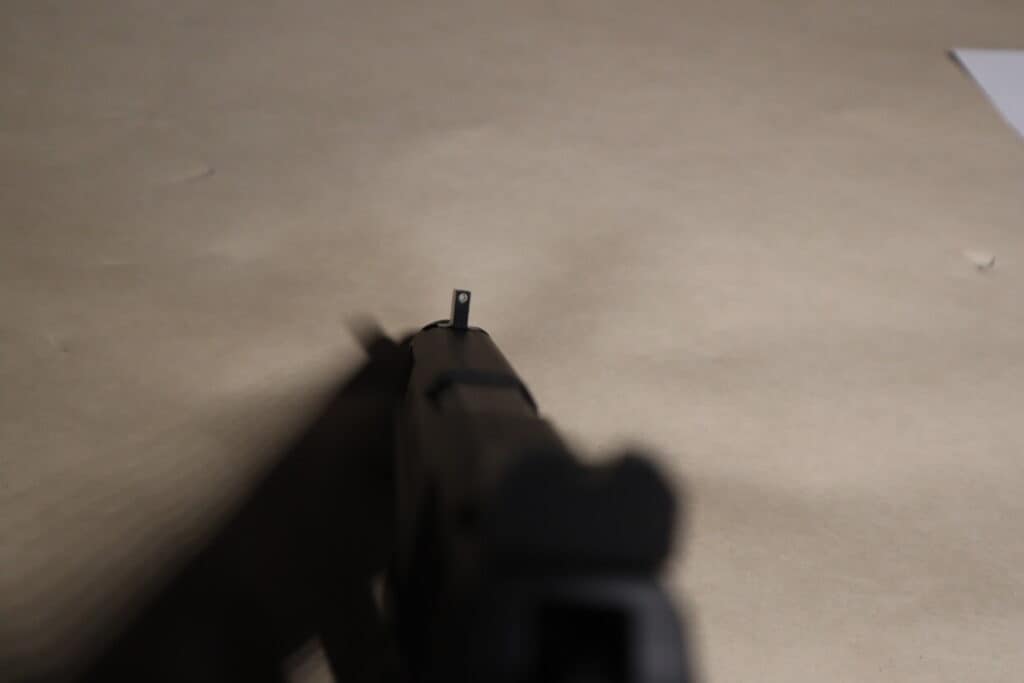
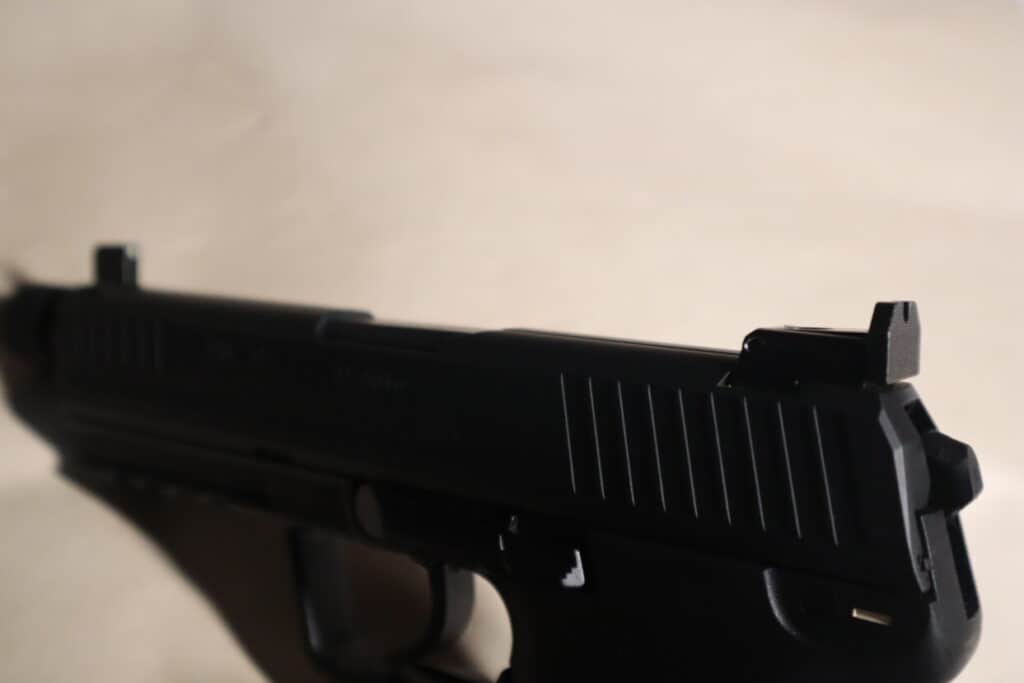
The front sight on the HK45 contains Tritium, a substance which glows in the dark. It has a white dot on the front sight for daytime use. The rear sight has no dots, but you line up the white dot between the rear posts to ascertain where you will hit your target.
The rear sight is adjustable up and down for elevation. You can make further adjustments to the right or left with a sight adjustment tool. The HK45 Tactical also has a threaded barrel for a suppressor. The HK45 Tactical comes with suppressor height sights.
This particular model has solid black rear posts, which do not provide a visual to go with the glowing Tritium at night. You can add dots to the rear posts. This type of sights is good for the person who might need to shoot in a low light situation.
Variables to Consider When Evaluating a Gun’s Sights
The color of the dots can vary. Usually the dots will be white or orange. This is the easiest fix because you can alter the color of the dots with a little paint.
If the posts have no dots, you can fix that easily with a little bit of paint.
Fiber optic sights come in various colors of vials. Look for a bright color such as orange or bright green.
The notch between the posts can be U-shaped, V-shaped, or squared out. A smaller notch provides a more specific place to look, but a wider notch gives you more latitude to find the right focal point.
The front sight will vary in height and shape. If it has a colored insert, the most likely color will be red or orange.
You may have one dot on the front sight, two dots on the rear sights without a front dot, or three dots. If you want more dots you can paint them on.
Night sights may or may not have an outline at the edge of the rear sights to help you focus.
What You Can Replace
If you buy a basic gun with sights integrated into the frame, you get the sights it comes with.
Sights that are separate pieces inserted into the frame can be replaced with aftermarket parts. Have a gunsmith do this for you.
Some models such as the HK45 can get dots on the rear sight or a shorter front sight for a shooter who does not want to add a suppressor.
You may be able to trade your fixed rear sights for a set that can be adjusted for windage and elevation.
How to See if Your Sights Can Be Replaced
Look for a groove where the sight is inserted rather than a frame that smoothly transitions to the sight because it is all one piece.
Go to the manufacture’s website and view the specs on the model you want to buy. You should find an indication that sights can be replaced. This is more likely with higher-end guns.
Go to a shooting supply store such as Optics Planet and type in the model of gun you have with “replacement sights” to see what is available.
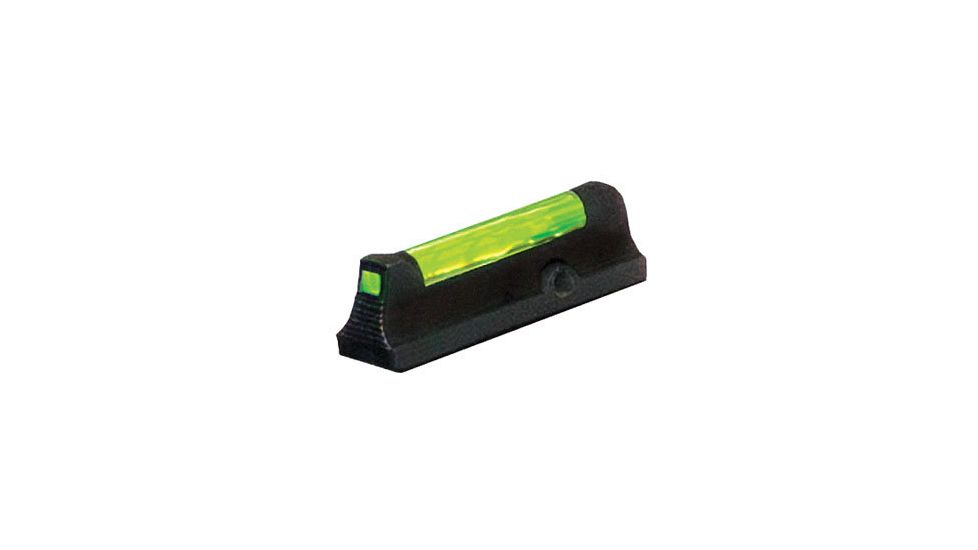
What about Laser Sights?
Laser sights do not replace the sights that came with your gun. They mount under the gun or in the grip and provide an additional point of reference by reflecting a green or red dot onto the target.
When you add laser sights, you need to calibrate them with your sights by shooting a few rounds and then adjusting until the laser points where your eye focuses on the target.

Adding Red Dot Sights
Your handgun may be a candidate for adding red dot sights, also known as reflex sights. This requires a pre-milled slide or work by a gunsmith to cut a notch into your slide for a place to set the base of the reflex sight. This may obscure or require removal of your standard rear sight.
The reflex sight serves as an additional aiming aid if you have difficulty focusing on the standard sight. It’s a red dot projected onto a prism in the sight itself. Unlike a laser sight where the dot is visible on the target, the dot in the reflex sight is only visible to the shooter.
You can add a reflex sight to a semi-automatic pistol, but a revolver barrel is not wide or deep enough to accept it.

Mounting a Small Scope
A very large revolver (think Yosemite Sam) could accept a small scope for hunting. This would allow you to acquire a moving target when you are hunting small or large game. Such a large bore revolver would not be a concealed carry option.
If You Need Advice
Your favorite gun enthusiast is just itching to talk to you about the sights on your gun. Take a trip to the range and get an idea of how his or her favorite guns are configured so you know what you like.
Watch our YouTube channel and read our blog for great information about choosing your next gun.
